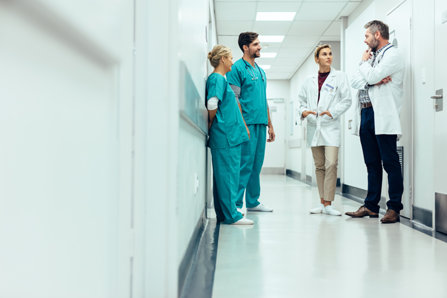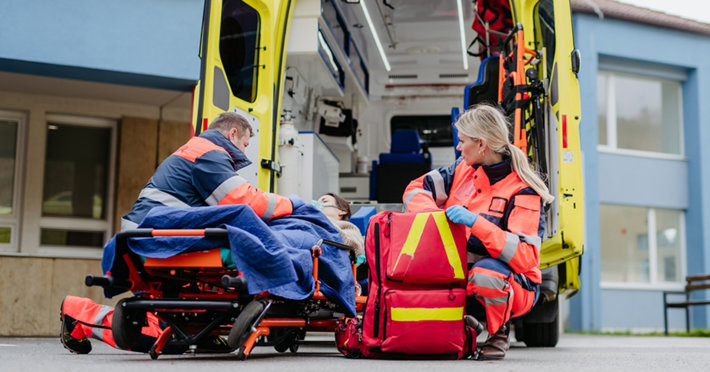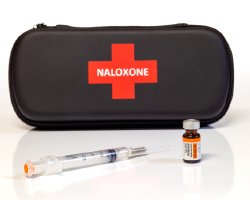Without an Opioid Antidote, What Would Our Overdoses Losses Look Like?

Over the last two decades, American families have reeled from the loss of hundreds of thousands of our loved ones due to drug overdoses. As nearly everyone knows, the primary drugs taking these lives since 2000 have been opioids. First, rising numbers of prescription opioid deaths, followed by increasing heroin deaths and finally, skyrocketing fentanyl deaths.
From fewer than 20,000 overdose deaths in 1999, our losses have soared to more than 100,000 per twelve-month period as of April 2021. We have maintained that astronomical rate of loss since.
There’s only one thing that could possibly be worse than our current situation of drug overdose losses. And that would be our current situation of drug overdoses if we didn’t have a tool to reverse these overdoses when they are caught early enough.
Naloxone Quietly Saves Lives
Naloxone is a drug that can bring an overdosing, dying person back to life in seconds. It acts by reversing the effects of opioid drugs.
It was originally approved to treat opioid overdoses in 1971. For many years, it was administered only by injection, which made it difficult for a policeman, fireman or bystander to quickly get this remedy into an overdosing person’s system.
By 2010, hundreds of humanitarian programs in fifteen states were distributing and using naloxone to reverse overdoses.
Then, one by one, states began to launch programs to get naloxone into more widespread use. By 2014, 30 states plus the District of Columbia supported widespread naloxone access and/or had enacted Good Samaritan laws protecting those who tried to save a person from a fatal overdose. Just these two actions resulted in a 14% drop in fatalities from opioids.
Then in 2015, the Food and Drug Administration approved a new form of naloxone that could be sprayed into a person’s nostrils. This simpler method of administration enabled faster and more widespread use of naloxone. This new form of naloxone was brand-named Narcan.
By 2020, all fifty states and the District of Columbia had enacted some type of legislation to facilitate access to naloxone. Additionally, all 50 states and the District of Columbia have made it possible for individuals to obtain naloxone without a prescription. All these new laws are an effort to save the lives of those who would otherwise be lost to opioid overdoses.
How Many Lives Have Been Saved with Naloxone?

For many years, it has been difficult to gather statistics on the number of times naloxone was administered to those in dire straights. We have watched in horror as our overdose losses more than doubled in just seven years, rising from 52,404 in 2015 to more than 106,000 in 2021. By 2021, three-quarters of these deaths were from opioids, with the vast majority of these opioid deaths resulting from fentanyl.
Our social and medical services have been strained by the effort to keep these individuals alive. Emergency medical technicians race to the sites of overdoses in an attempt to save lives. Sometimes they are too late. One after another, states have increased their budgets for this opioid reversal drug so more of these people can be saved.
But what if we didn’t have this opioid reversal drug? What would our losses look like? Our situation without naloxone would be an unflinching look at the severity of our true problem of drug abuse. Perhaps we will never grasp our actual situation related to addiction and overdose deaths unless we take both fatal and non-fatal drug overdoses into consideration.
Emergency Medical Services Data Provides Vital Insight
The Office of National Drug Control Policy now maintains a national dashboard providing constant updates to the number of lives being saved due to immediate care from emergency medical services.
In the most recent 12-month period, the national EMS dashboard reports that they were called to nearly 211,000 opioid overdoses. That’s not drug overdoses of any kind, that’s only opioid overdoses that could potentially be reversed with naloxone.
Now contrast that number with our statistic of loss. For the twelve-month period ending October 2022, the CDC estimates that the final number of overdose deaths will be close to 108,000.

The essential question is this: How many would we actually have lost if not for rapid emergency medical services and naloxone?
The total of non-fatal overdoses according to this dashboard plus the fatal overdoses reported by the Centers for Disease Control and Prevention comes to 319,000.
Is this how many Americans we would lose to opioid overdoses without naloxone? We don’t know precisely because there are many people who overdose more than once each year. But this number of 319,000 may be a more accurate representation of our opioid problem than any other.
Sampling Minnesota and Illinois for Comparison
Some states make their number of fatal and non-fatal opioid overdoses public. A look at these two states enables us to determine if our situation could really be this serious.
- Minnesota: In 2021, Minnesota reported 978 fatal overdoses. Their non-fatal overdoses reached 4,349. If there had been no emergency administration of naloxone, their losses could have reached 5,327 or 5.4 times their current losses.
- Illinois: This state’s monthly fatal overdoses average 309 deaths or 3,717 in all of 2021. The state reports monthly emergency room and emergency medical services encounters with opioid overdoses of 1,500 per month. That’s 18,000 encounters per year. Added together, the state has a potential of 21,717 deaths per year if opioid overdoses could not be reversed.
What is obvious is that our opioid overdose losses would be astronomically higher if we did not have capable first responders and emergency room staff armed with naloxone. If we overlook this terrible number of near-misses, we avoid facing the real damage being done to our country from opioid abuse and addiction.
What Can We Learn From This Data?
Data doesn’t do us much good unless we can learn something from it and then take action to make things better. What lessons can we then derive from these facts?
Americans are in far more danger than our already-terrifying overdose losses would indicate. If not for the rapid actions of emergency medical staff all across the country, our losses would be absolutely staggering.
We have hundreds of thousands of people risking death every day when they inject, smoke or otherwise consume illicit drugs. These people need all the help we can give them.
On our own home fronts, this data points out the utter necessity of freeing a person from these risks by helping them overcome the compulsion to use opioids or any drug. It’s not the easiest thing to convince a person to go to rehab. It’s not always easy to find a rehab with room for them. But it is one of the most important tasks we can take on, as Americans, to save our friends, neighbors and community members.
Sources:
- NIDA. “Drug Overdose Death Rates.” NIDA, 2023. NIDA.
- National Training and Technical Assistance Center. “Law Enforcement Naloxone Toolkit.” NTTAC, undated. NTTAC.
- Centers for Disease Control and Prevention. “Patient-Level and County-Level Trends in Nonfatal Opioid-Involved Overdose Emergency Medical Services Encounters.” CDC, 2022. CDC.
- PubMed. “Opioid-overdose laws association with opioid use and overdose mortality.” PubMed, 2018. PubMed.
- NIDA. “Naloxone for Opioid Overdose: Life-Saving Science.” NIDA, 2021. NIDA.
- Legislative Analysis. “Naloxone Access: Summary of State Laws.” Legislative Analysis, 2023. Legislative Analysis.
- NEMSIS. “Opioid Overdose Tracker.” NEMSIS, 2023. NEMSIS.
- CDC. “Provisional Drug Overdose Death Counts.” CDC, 2023. CDC.
- Minnesota Department of Health “Drug Overdose Dashboard.” MDH, 2023. MPH.
- Illinois Department of Public Health. “Statewide Semiannual Opioid Report.” IDPH, 2023. IDPH.


 ®
®